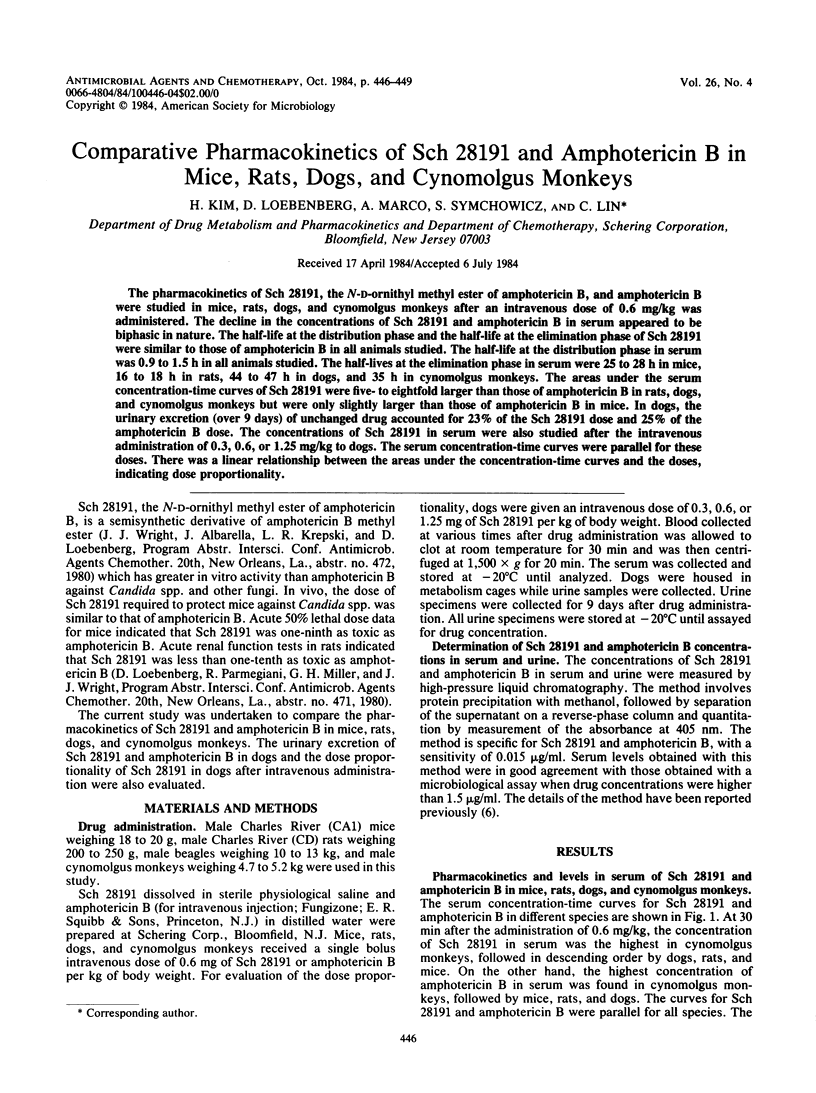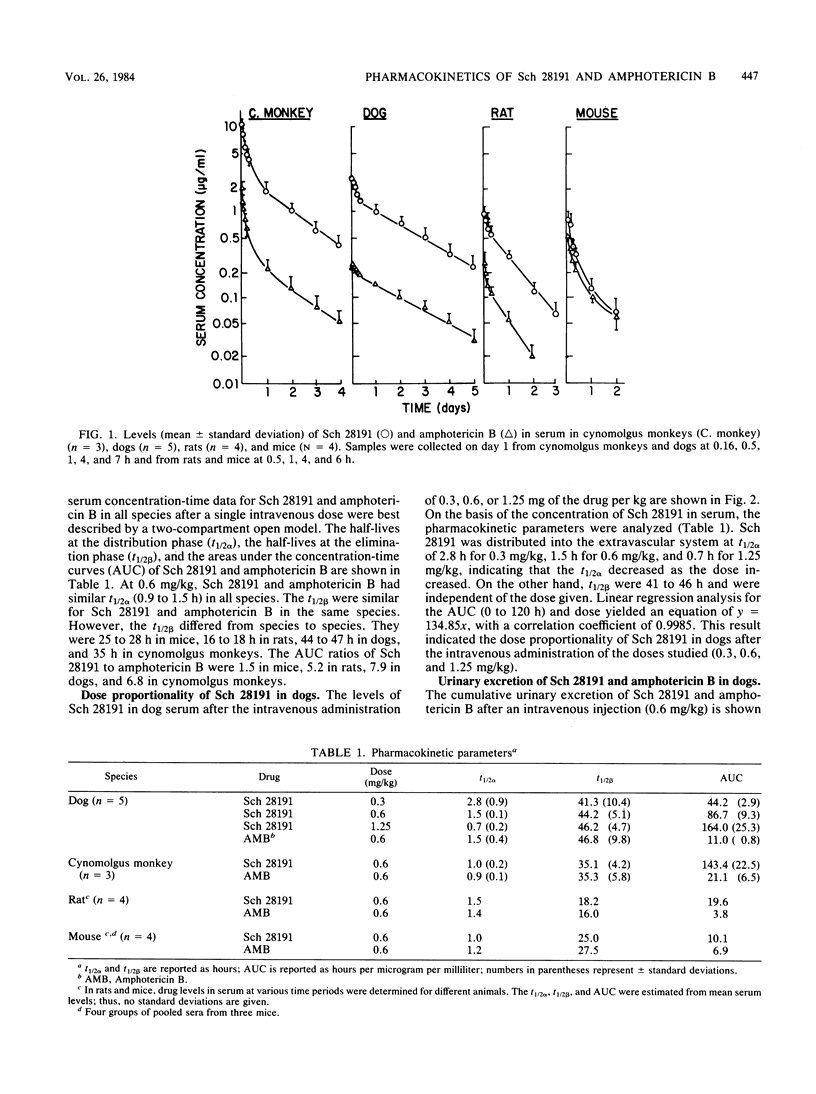Abstract
The pharmacokinetics of Sch 28191, the N-D-ornithyl methyl ester of amphotericin B, and amphotericin B were studied in mice, rats, dogs, and cynomolgus monkeys after an intravenous dose of 0.6 mg/kg was administered. The decline in the concentrations of Sch 28191 and amphotericin B in serum appeared to be biphasic in nature. The half-life at the distribution phase and the half-life at the elimination phase of Sch 28191 were similar to those of amphotericin B in all animals studied. The half-life at the distribution phase in serum was 0.9 to 1.5 h in all animals studied. The half-lives at the elimination phase in serum were 25 to 28 h in mice, 16 to 18 h in rats, 44 to 47 h in dogs, and 35 h in cynomolgus monkeys. The areas under the serum concentration-time curves of Sch 28191 were five- to eightfold larger than those of amphotericin B in rats, dogs, and cynomolgus monkeys but were only slightly larger than those of amphotericin B in mice. In dogs, the urinary excretion (over 9 days) of unchanged drug accounted for 23% of the Sch 28191 dose and 25% of the amphotericin B dose. The concentrations of Sch 28191 in serum were also studied after the intravenous administration of 0.3, 0.6, or 1.25 mg/kg to dogs. The serum concentration-time curves were parallel for these doses. There was a linear relationship between the areas under the concentration-time curves and the doses, indicating dose proportionality.
Full text
PDF



Selected References
These references are in PubMed. This may not be the complete list of references from this article.
- Bindschadler D. D., Bennett J. E. A pharmacologic guide to the clinical use of amphotericin B. J Infect Dis. 1969 Oct;120(4):427–436. doi: 10.1093/infdis/120.4.427. [DOI] [PubMed] [Google Scholar]
- Craven P. C., Ludden T. M., Drutz D. J., Rogers W., Haegele K. A., Skrdlant H. B. Excretion pathways of amphotericin B. J Infect Dis. 1979 Sep;140(3):329–341. doi: 10.1093/infdis/140.3.329. [DOI] [PubMed] [Google Scholar]
- Jagdis F. A., Hoeprich P. D., Lawrence R. M., Schaffner C. P. Comparative pharmacology of amphotericin B and amphotericin B methyl ester in the non-human primate, Macacca mulatta. Antimicrob Agents Chemother. 1977 Nov;12(5):582–590. doi: 10.1128/aac.12.5.582. [DOI] [PMC free article] [PubMed] [Google Scholar]
- Kim H., Lin C. High-pressure liquid chromatographic method for determination of Sch 28191 in biological fluids. Antimicrob Agents Chemother. 1984 Jan;25(1):45–48. doi: 10.1128/aac.25.1.45. [DOI] [PMC free article] [PubMed] [Google Scholar]


